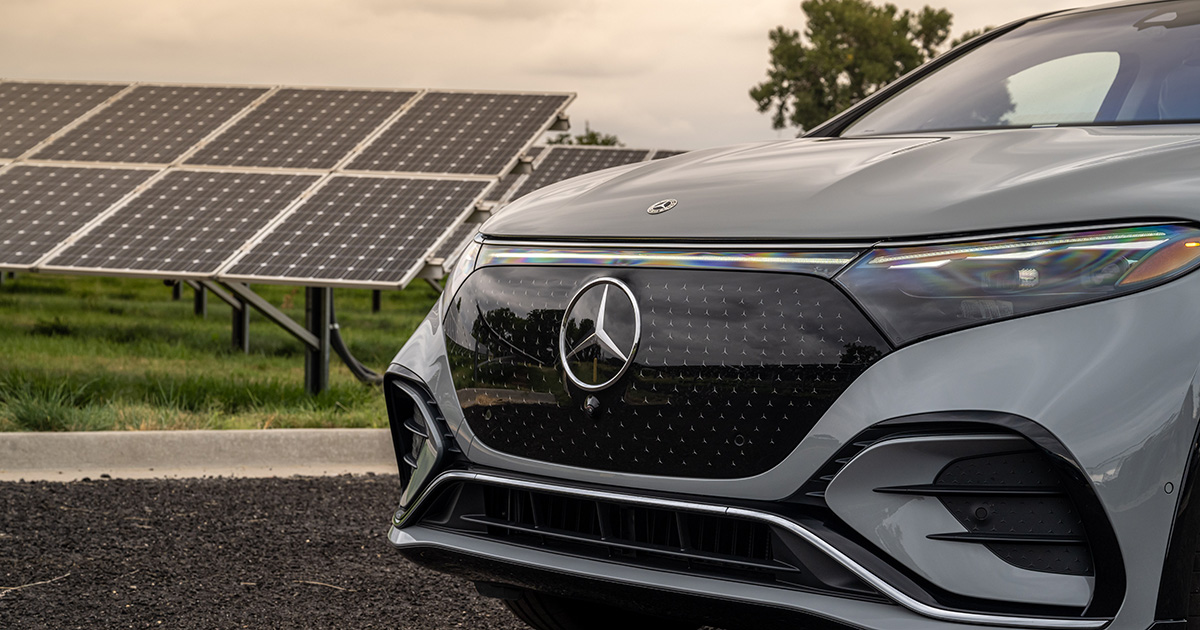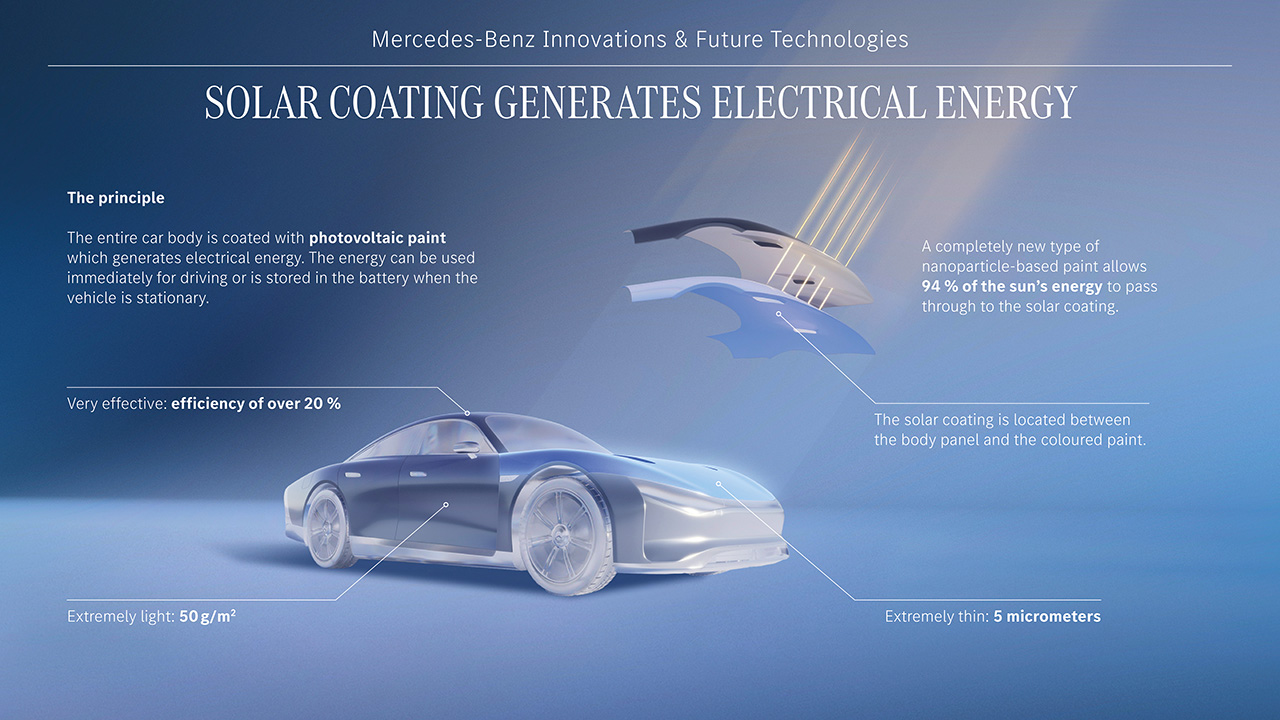Mercedes-Benz is experimenting with a paint that will power electric cars with solar energy

Mercedes-Benz is researching technologies that should help electric car drivers forget about frequent charging. One of the most interesting experiments is "solar paint", which can provide the car with the electricity to cover more than 12,000 kilometres a year.
Here's What We Know
The experimental paint is based on ultra-thin solar modules that are only 5 micrometres wide, which is dozens of times thinner than a human hair. Their weight is 50 grams per square metre, and they are applied as the thinnest paste. The modules are up to 20 per cent efficient. According to the company, an area of 11 square metres (the equivalent of a mid-size SUV) can produce energy for 12,000 kilometres of driving per year under optimal conditions.

The energy generated can be used to charge a high-voltage battery. What's more, the system works even when the vehicle is switched off, making it particularly attractive for increasing autonomy and reducing the number of charging sessions.
Potential and practicality
The actual efficiency depends on where it is used. For example, in Stuttgart, Germany, the average Mercedes-Benz driver travels 52 kilometres daily, 62% of which can be covered by solar power. In sunny Los Angeles, the situation is even more optimistic: according to the company's calculations, up to 100 per cent of the daily distance can be covered by solar charging. Excess energy can be used to power the home grid thanks to two-way charging technology.
Other advantages of "solar paint" include the absence of rare earth metals and silicon in its composition, ease of recycling and affordability in production. Developers are working to ensure that the technology can be used on any vehicle surface, regardless of angle or shape.
Source: Mercedes-Benz